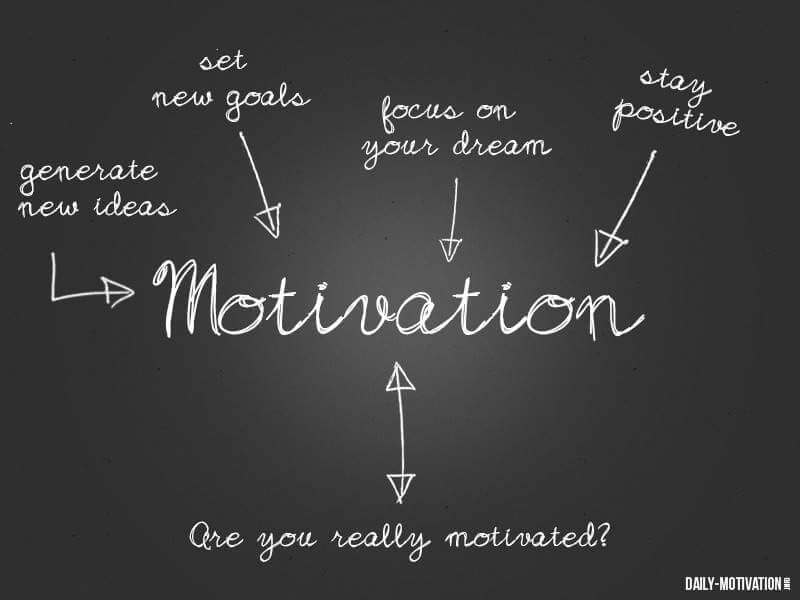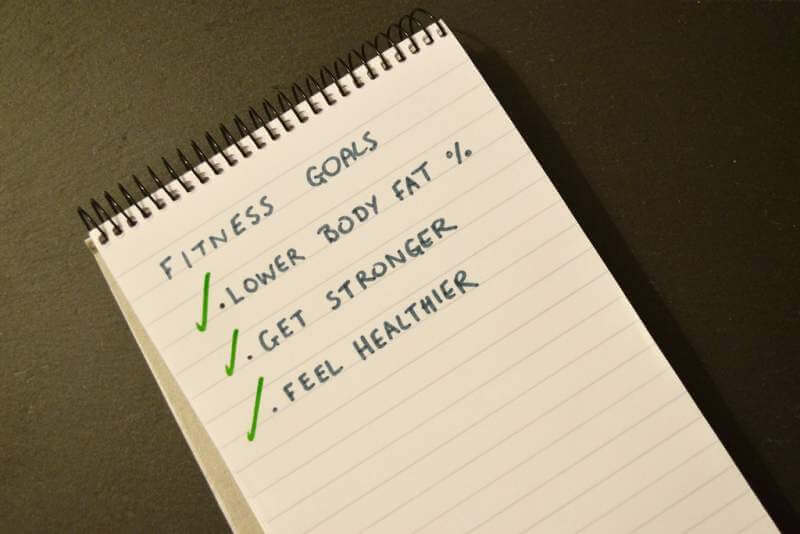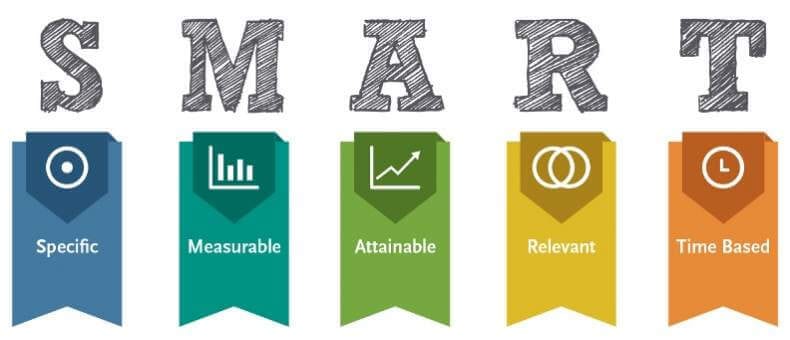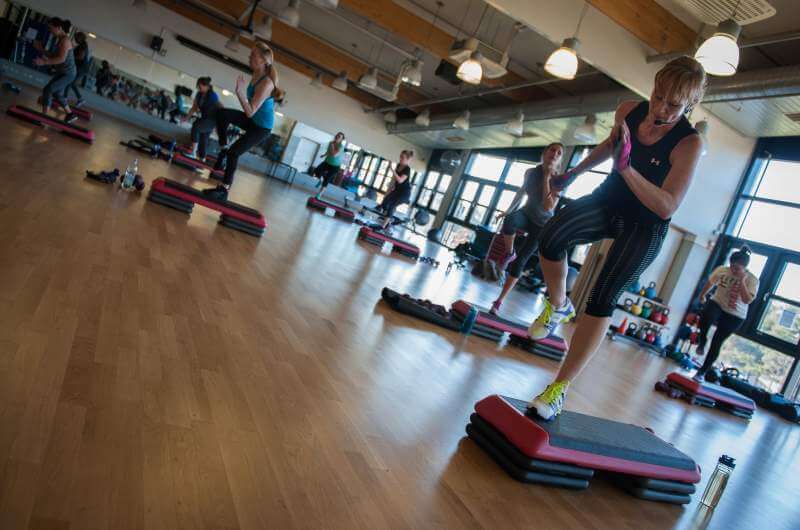Your Guide to Setting SMART Goals and Achieving Them
If you want to achieve your health and fitness goals, it is essential that you’re able to maintain your motivation, consistency and enthusiasm throughout your journey. Success in any field doesn’t happen randomly – we know that getting to where we want to be in out career takes time and effort – and fitness is no exception to the rule[9].
If you want to achieve fitness success you need to set goals; you need to set good ones. This article aims to help you put together a list of goals that you can achieve with the next 6 months, alongside a quick rundown on how best to strategize, stay on track and gain the fitness success you are seeking!
Find Intrinsic Motivation
 Do you really want this?
Do you really want this?
“Sometimes, you fall short because you don’t have enough fire in your belly.”
Motivation is what energizes us to get things done. No matter what your task might be, it requires you to become motivated in order to get it done[5].
Motivation tends to be something that we only consider to be necessary when it comes to the completion of more ‘unpleasant’ task and challenges, but in reality, it comes into play in everything we do. The reason you think less about it when it comes to the fun things that you already want to do is due to this want coincides with high motivation[6,7].
The key to remaining enthusiastic when it comes to reaching your fitness goals is the maintenance of your motivation. While hiring a personal trainer to shout, reading inspiring quotes and body transformation stories, or watching videos of badass athletes competing might provide you with a temporary boost in morale, the trick to succeeding is to make your motivation intrinsic[8].
Do you really want this?
Intrinsic motivation is an energizing of behavior that comes directly from you as an individual. This motivation originates within your will and interest in the activity at hand and is nothing to do with any external influences.
Because of this, the behavior itself becomes reward enough and no external rewards are required by an intrinsically motivated person. Research has shown that finding intrinsic motivation can provide individuals with more interest, excitement, confidence, enhanced performance, persistence, creativity, self-esteem and a generally better level of well-being. Evidently, this is wonderfully conducive to training and reaching your fitness goals within a given time frame[10,11].
Set your Goals Carefully
 You need to set REALISTIC goals… saying something big. Is all well and good but it just tends to end up discouraging if you don’t make it…
You need to set REALISTIC goals… saying something big. Is all well and good but it just tends to end up discouraging if you don’t make it…
Goal setting framework should be used to have things working most effectively[1].
Goals are important. Effective goal setting has been proven to help you to achieve more. Goals assist you in strategically picking the right actions and efforts to reach a particular set of results. Having a well-put-together set of fitness goals can play a huge part in your self-control and power to push through negative feelings and setbacks.
The most important thing about setting your goals, however, is to make sure the goals you pick are realistic[2]. Plucking a random set of number or ideas from thin air is exactly where you might be going wrong. Setting yourself big changes and impressive PBs is all well and good, but you might just be setting yourself up to fail[3,4].
Missing your goals time and time again can be really discouraging, so take the time to understand your goals, and make sure that they are personally meaningful to you. Following the SMART goals framework is a highly effective way of ensuring your goals are useful and achievable.
SMART Goals Explained
 Set Goals That Are Specific
Set Goals That Are Specific
Your goals should be simply written and easy to understand; clearly defining what is going to happen.
Set Goals That Are Measurable
All of your goals should be measurable i.e. you should be able to obtain substantial evidence of the completion of your goal. In most cases, fitness goals involve changes in your body weight or measurements but other numerical measurements can also be used, these include weights lifted or distance run.
Set Goals That Are Achievable
Your goals need to be achievable, otherwise, the become demotivational. While fitness goals should remain challenging to keep you working hard to meet them they should also be definitely achievable. Most goals can be achieved if you plan wisely within your time frame but be sure not to set unrealistic goals.
Set Goals That Are Relevant
Your goal needs to be relevant to what you wish to achieve overall in order for it to remain useful. There is no point in setting a goal to “run 400m in under 2 minutes” if your overall aim is to gain muscle mass.
Set Goals That Are Time Bound
Setting a governing time frame for your goals is just as important as setting the goals themselves. Adding a time frame to your goals provide them with some urgency. Working without a specified time frame leaves you much less likely to achieve a satisfactory outcome.
Consistency is Key
 Consistency in your training and diet is essential. Your body and fitness levels did not reach the place they are today over the course of a few days, so you can’t possibly make substantial changes to them without the will and the patients to spend time doing so.
Consistency in your training and diet is essential. Your body and fitness levels did not reach the place they are today over the course of a few days, so you can’t possibly make substantial changes to them without the will and the patients to spend time doing so.
There’s a huge host of tricks and techniques to keep yourself as consistent as possible on your fitness journey:
Agreeing to get your morning workouts done with a friend will keep you accountable
Additionally to this, working out with like-minded people can make the whole experience more enjoyable, and you can make some life-long friends in the process
Listening to music during workouts can help to get you pumped
That coffee habit you have? Use it to your advantage and boost your energy levels before you head out on your run
Rewarding yourself and having fun is also essential to your staying on track – if you attempt to be too strict – and too boring – for too long, you’re bound to crack eventually
Schedule, plan and prepare your meals ahead of time to stop your temptation to grab unhealthy snacks on the go
Plan what you’re going to get done at the gym today before you arrive so you don’t waste your time browsing the machines and weights
The Final Word: Ride Your Setbacks
There isn’t a single athlete who hasn’t had a setback at some point along the way. Injury, illness, bad news and even simple lack of progression are all occupational hazards when it comes to sport and fitness. Always remember that you are not alone in this, and maintain confidence in your own ability. Treat setbacks as opportunities to work on new areas or to learn how to target those areas in which you are weak.
To achieve your fitness goals in 6 months, choosing the right goals and training consistently are going to be key – no matter the setbacks or plateaus you might experience along the way. Remain motivated and continue to remind yourself why you started out on this fitness journey in the first place.
Willpower is your best friend when it comes to achieving anything in your life that takes some grit to stick to.
Bibliography
[1] Brehm, Barbara A. Successful fitness motivation strategies. Human Kinetics, 2004.
[2] Deci, Edward, and Richard M. Ryan. Intrinsic motivation and self-determination in human behaviour. Springer Science & Business Media, 1985.
[3] Ryan, Richard M., and Edward L. Deci. “Self-determination theory and the facilitation of intrinsic motivation, social development, and well-being.” American Psychologist 55.1 (2000): 68.
[4] Deci, Edward L. “Effects of externally mediated rewards on intrinsic motivation.” Journal of Personality and Social Psychology 18.1 (1971): 105.
[5] Vallerand, Robert J. “A hierarchical model of intrinsic and extrinsic motivation for sport and physical activity.” (2007).
[6] Beaurepaire, Jerome, and Marko TapioTuukkanen. “Method and apparatus for determining a drop-off and a pick-up location based on fitness goals.” U.S. Patent Application No. 14/317,971.
[7] Ferguson, Kristi J., et al. “Attitudes, knowledge, and beliefs as predictors of exercise intent and behaviour in schoolchildren.” Journal of School Health 59.3 (1989): 112-115.
[8] Conzemius, Anne, and Jan O’Neill. The power of SMART goals: Using goals to improve student learning. Solution Tree Press, 2009.
[9] Burke, Lora E., et al. “SMART trial: A randomized clinical trial of self-monitoring in behavioural weight management-design and baseline findings.” Contemporary clinical trials 30.6 (2009): 540-551.
[10] Duda, Joan L., Alison E. Smart, and Marlene K. Tappe. “Predictors of adherence in the rehabilitation of athletic injuries: An application of personal investment theory.” Journal of Sport and Exercise Psychology 11.4 (1989): 367-381.
[11] Werle Lee, Karen P. “Planning for success: setting SMART goals for study.” British Journal of Midwifery 18.11 (2010): 744-746.
